Scoping Requirements for Elements and Spaces [§204 – §243]
Scoping provisions for elements and spaces, which are summarized here, are further discussed with relevant technical provisions in the following chapters of this guide.
General Elements
Most scoping provisions apply to both interior and exterior elements where provided throughout facilities and sites (and are not limited to those in corridors as shown here).
Specific Spaces and Occupancies
The ADA Standards include scoping requirements specific to certain types of spaces and facilities that apply based on the intended use and design. Spaces with multiple uses must meet all applicable requirements for each use. Scoping provisions for specific spaces and occupancies address:
Transportation Facilities (§218) and Bus Stops (§209)
Assembly Areas (§221) *
Dressing, Fitting, and Locker Rooms (§222)
Medical Care and Long-Term Care Facilities (§223) *
Transient Lodging Guest Rooms (§224) *
Storage (§225)
Judicial Facilities (§231)
Detention and Correctional Facilities (§232) *
Residential Facilities (§233) *
Recreation Facilities (§234 – §243)
DOJ’s 2010 ADA Standards incorporate regulatory language that modifies or augments a number of these provisions (noted with an asterisk) and also set forth additional requirements for spaces and facilities provided in housing at a place of education, social service center establishments, and curb ramps.

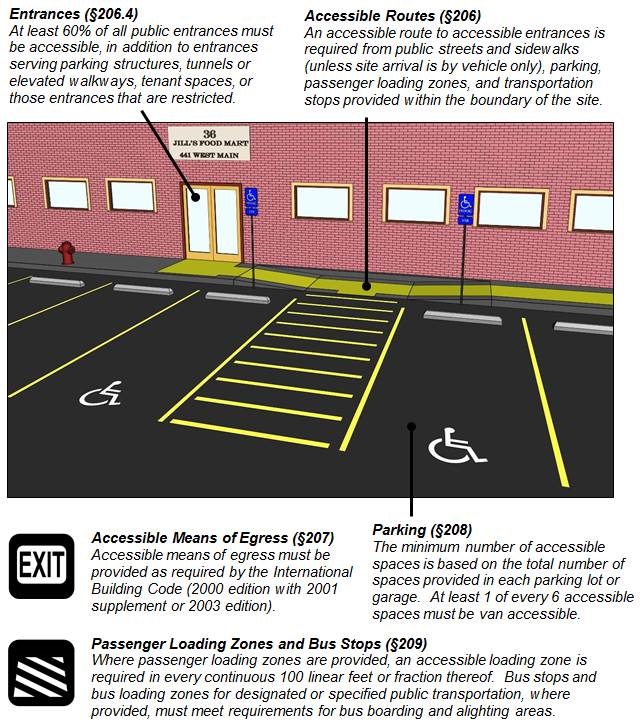
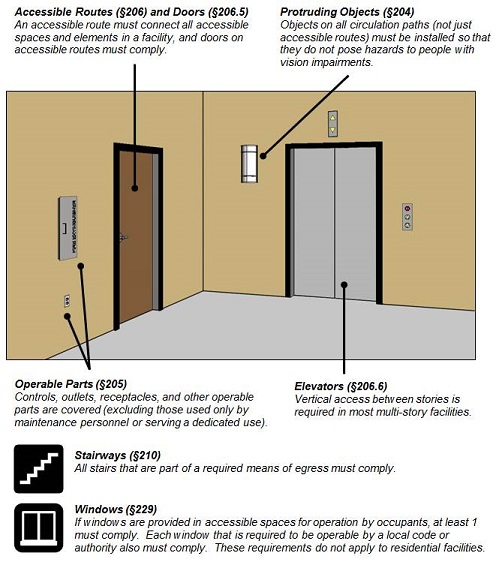
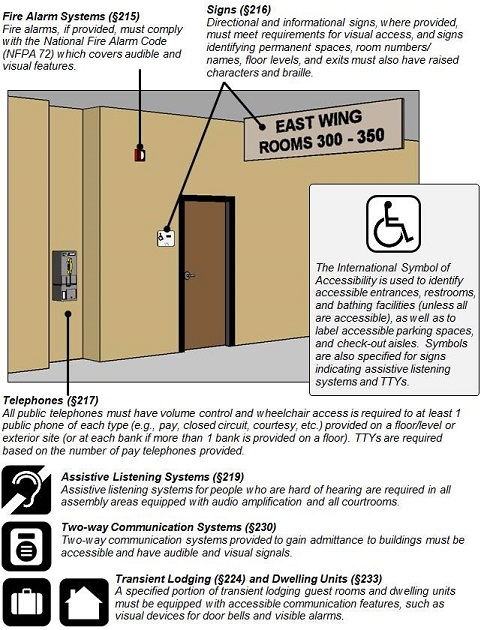
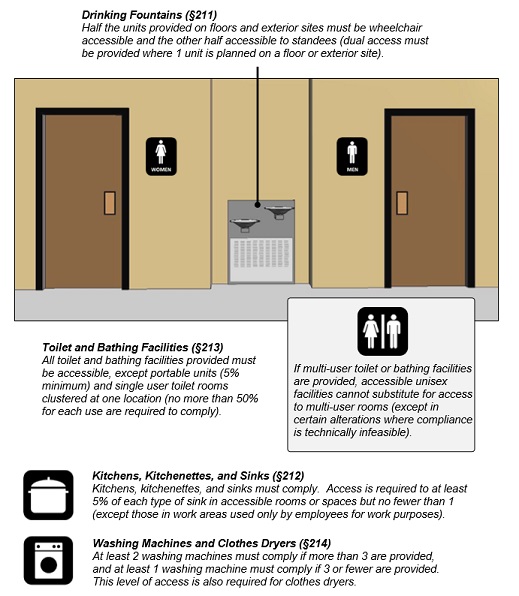
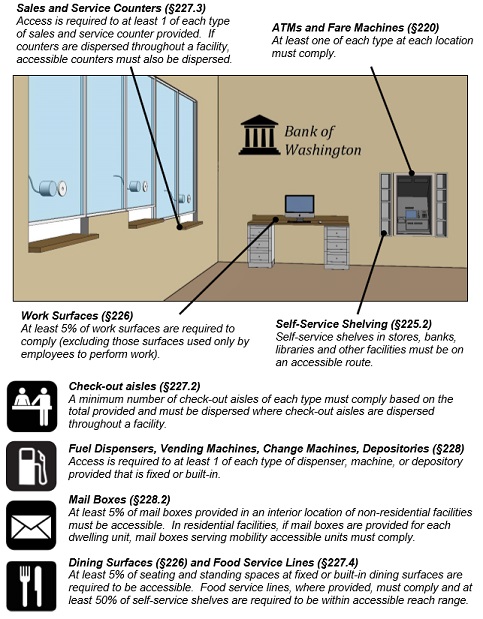










User Comments/Questions
Add Comment/Question